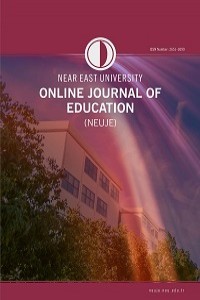SUGGESTIONS RELATED TO THE EVALUATION OF THE EXCEL COURSE AT COMPUTER EDUCATION AND INSTRUCTIONAL TECHNOLOGIES DEPARTMENTS
SUGGESTIONS RELATED TO THE EVALUATION OF THE EXCEL COURSE AT COMPUTER EDUCATION AND INSTRUCTIONAL TECHNOLOGIES DEPARTMENTS
The
practical application aspect is important for the Excel course included in the
curriculum of the Computer Education and Instructional Technologies Department
(CEIT). However, the approach adopted when it comes to evaluations and grading
is one sided. This study takes the example of an Excel course offered at the
Near East University Ataturk Faculty of Education CEIT department and evaluates
it according to the Metfessel-Michael program evaluation model. This evaluation
was conducted within the timeframe as stated in the schedule. The study used
mixed methods research and the opinions of students, employees working in this
field, teaching staff and various administrators were collected via
questionnaire, observation forms and face to face interviews. Quantitatively
the differences between the two classes were evaluated according to common
criteria and the correlative technique was used. This study concludes that as
the Excel course has a large practical component, a multifaceted evaluation
method with practical examinations and in-class assignments at the computer
would better evaluate the students’ achievements. This study also discovered a
need for regulations that would allow the use of the results of practical Excel
examinations as exam results.
___
- Bacanak, A., Karamustafaoğlu, O., & Kose, S. (2003). Yeni bir bakis: Egitimde teknoloji okuryazarligi. Pamukkale Universitesi, Egitim Fakultesi Dergisi, 2(14), 191-196.
- Buyukozturk, S. (2002). Bilgisayar ve ogretim teknolojileri ogretmenligi ile sinif ogretmenligi programi ogrencilerinin akademik basarilarini etkileyen faktorler. Egitim Yonetimi, 8(30), 187–204.
- Creswell, J. W. (2003). Research design: Qualitative, quantitative, and mixed methods approaches (2nd ed.). Thousand Oaks, CA: Sage.
- Creswell, J. W. (2006). Understanding mixed methods research, (Chapter 1). Available at: http://www.sagepub.com/upm-data/10981_Chapter_1.pdf
- Cronbach, L. J. (2000). Course improvement through evaluation, Evaluation in Education and Human Services, 49, 235-247.
- Demirel, O. (1999). Egitimde program gelistirme. Ankara: Pegem Publishing.
- Taylor-Powell, E., Steele, S., & Douglah, M. (1996). Planning a programme evaluation. University of Wisconsin. Retrieved on 09.12.2017 on http://learningstore.uwex.edu/assets/pdf/g3658-pdf
- Erden, M. (1998). Egitimde program degerlendirme. Ankara: Ani Publishing.
- Fitzpatrick, J., James, S., & Blaine W. (2004). Program evaluation: Alternative approaches and practical guidelines. Boston: Pearson Publishing.
- Fitzpatrick, J. L., Sanders, J. R., & Worthen, B. R. (2011). Program evaluation alternative approach and practical guidelines. Boston: Pearson Publishing.
- Oliva, P. F. (2009) Developing the Curriculum, New York: Pearson Allyn and Bacon.
- Onwuegbuzie, A.J., & Johnson, R.B. (2004). Mixed method and mixed model research. In Johnson, R.B., Christensen, L.B. (Eds.) Educational Research: Quantitative, Qualitative, and Mixed Approaches, (pp. 408 – 431). Allyn and Bacon, Needham Heights, MA.
- Ornstein, Allan C., & Hunkins Francis P. (2004). Curriculum: Foundations, principles and issues. Englawood Cliffs, NJ, Prentice Hall.
- Ozdemir, S. (2009). Egitimde program degerlendirme ve Turkiye’de egitim programlarini degerlendirme çalismalarinin incelenmesi. Yuzuncu Yil Universitesi Egitim Fakultesi Dergisi, 6(2), 126-149.
- Popham, W. J. (1988). Educational evaluation. Englewood Cliffs, New Jersey: Prentice Hall.
- Stufflebeam, D. L. (2003). The CIPP model of evaluation. In T.Kellaghan, D.L. Stufflebeam and L.A. Wingate, International handbook of educational evaluation (pp. 31-62). Boston: Kluwer Academic Press.
- Stufflebeam, D. L., & Shinkfield, A. J. (1990). Systematic evaluation. Boston: Kluwer - Nijhoff Publishing.
- Tunc, F. (2010). Evaluation of an English language teaching program at a public university using CIPP model (Unpublished master thesis). Orta Dogu Teknik Universitesi, Institute of Social Sciences, Ankara.
- Yuksel, I., & Saglam, M. (2012). Egitimde program degerlendirme. Ankara: Pegem Publishing.
- Usun, S. (2012). Egitimde program degerlendirme – Surecler, yaklasimlar ve modeller. Ankara: Ani Publishing.
- Web, (2003). Technological questions and issues; what is technology? Retrieved from http://atschool.eduweb.co.uk/trinity/watistec.html
- ISSN: 2651-3099
- Başlangıç: 2018
- Yayıncı: Yakın Doğu Üniversitesi
